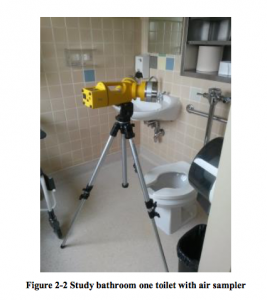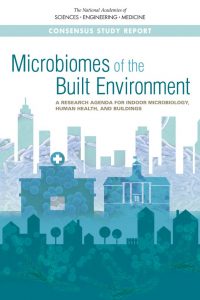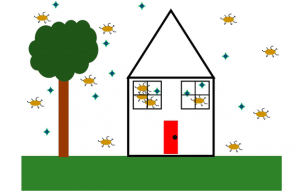Quick post – paper of possible interest:: Bacterial diversity among four healthcare-associated institutes in Taiwan | Scientific Reports Abstract Indoor microbial communities have important implications for human health, especially in health-care institutes (HCIs). The factors that determine the diversity and composition of microbiomes in a built environment remain unclear. Herein, we used 16S rRNA amplicon …
Quick post – paper of possible interest:: Seasonal variation characteristic of inhalable microbial communities in PM2.5 in Beijing city, China – ScienceDirect Abstract: Bacteria and fungi are primary constituents of airborne microbes in fine particulate matter (PM2.5) and significantly impact human health. However, hitherto, seasonal variation and effect of air pollution on microbial community …
Just got notified of this via some automated Google Scholar searchers and it seems like it might be of interest: Source: The role of hospital toilets in microbial dissemination and the effectiveness of ultraviolet C irradiation – UBC Library Open Collections Master’s thesis by Jesse Cooper from UBC. See some discussion of this on …
The NAS report on Microbiomes of the Built Environment is getting some reasonably broad reach. For example it was picked up by the American Industrial Hygiene Association. See: Report Suggests Research Agenda for Indoor Microbiology, Human Health, and Buildings
Recently we wrote about a new NAS report: NAS Study released: #MOBEstudy “Microbiomes of the Built Environment: A Research Agenda for Indoor Microbiology, Human Health, and Buildings” I am writing here to share that there will be a panel discussion on September 11 about this report. People can attend in person or online. From the email …
This new paper in PLOS Computational. Biology may be of interest: : The application of project-based learning in bioinformatics training by Emery LR and Morgan SL. Although many out there may already be doing projects based learning for bioinformatics, many others are not. This paper discusses how the authors added a projects component to an existing course …
So this is the culmination of a huge amount of work by a large number of folks. The National Academy of Sciences (NAS) just released a new report “Microbiomes of the Built Environment: A Research Agenda for Indoor Microbiology, Human Health, and Buildings”. This report was requested by the Alfred P. Sloan Foundation, the National …
A few years ago I was hearing increasing discussion about the idea that much of the microbiology of the built environment was “stamp collecting” and that the indoor microbiome might consist largely of dead or non-viable material passively deposited indoors. Many pweople argued that there was a need for better tools (or increased use of …
In the world of built environment (BE) microbiome research, we are by now well aware that building designs have influences on the indoor microbial assemblage. Therefore, BEs that employ a multitude of innovative designs, such as green and zero carbon buildings (GBs and ZCBs), may provide us greater insight on the mechanistic basis for …
Of possible interest – a new paper (on which I am a coauthor) on standards for minimum information about single cell genomes and genomes assembled from metagenomes. See link below: Source: Minimum information about a single amplified genome (MISAG) and a metagenome-assembled genome (MIMAG) of bacteria and archaea : Nature Biotechnology : Nature Research







